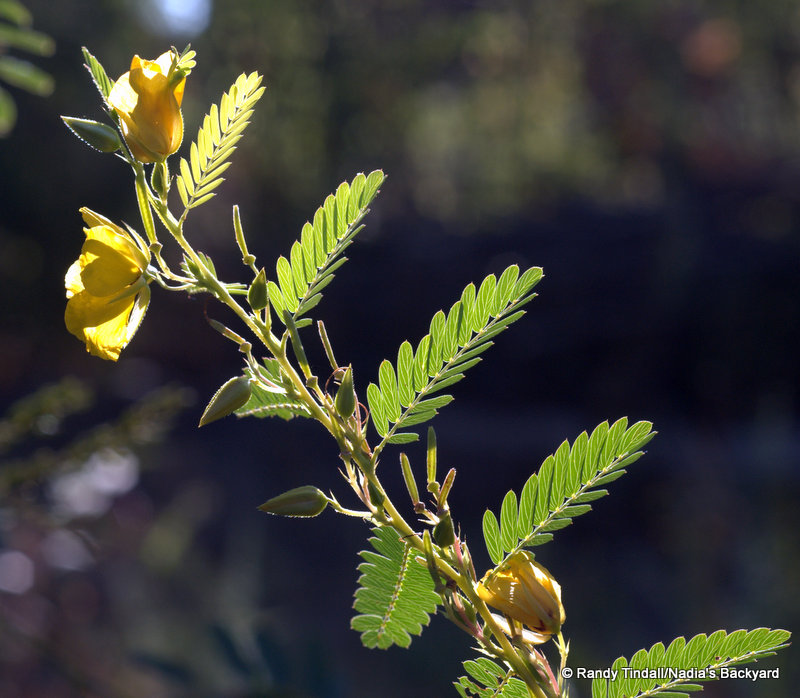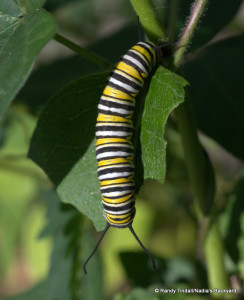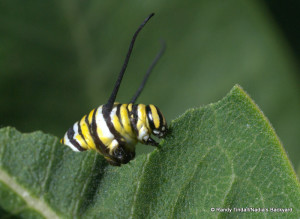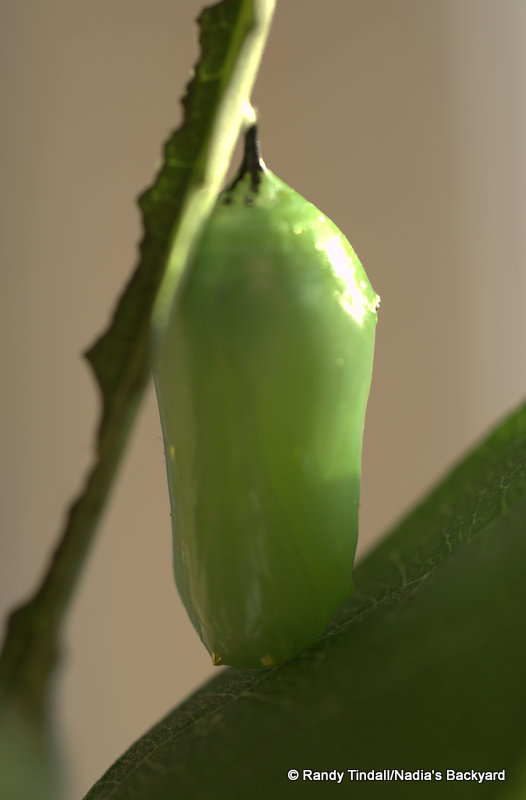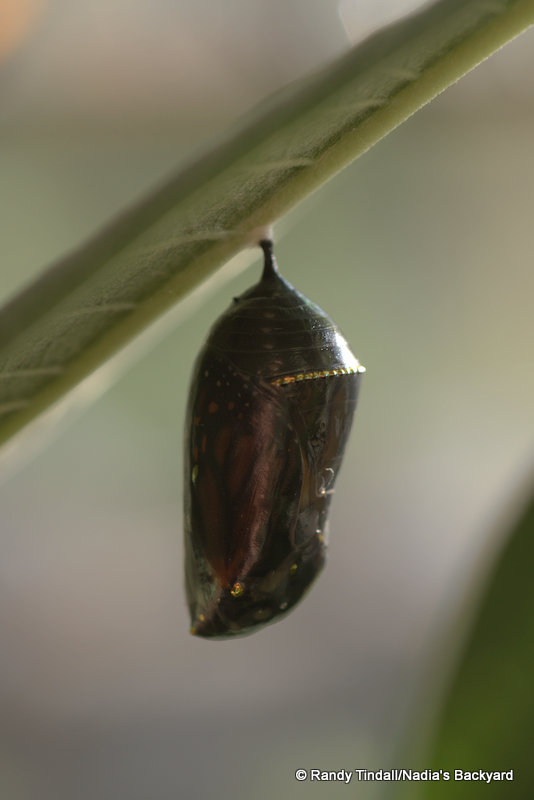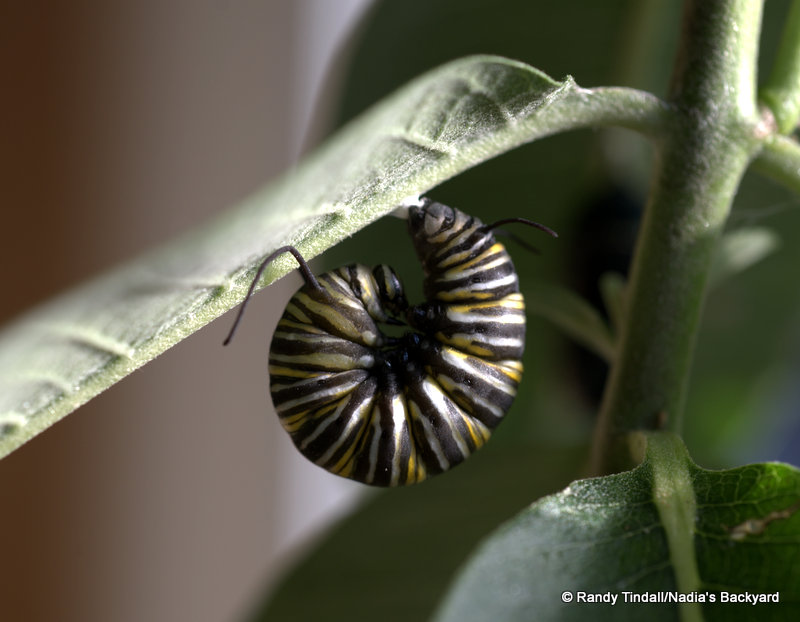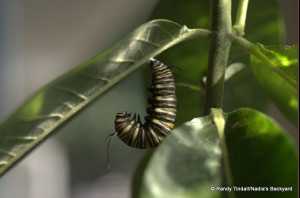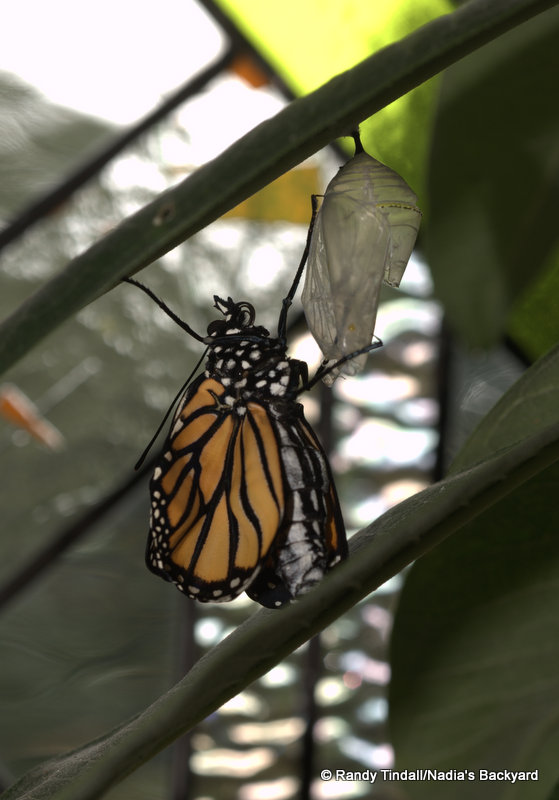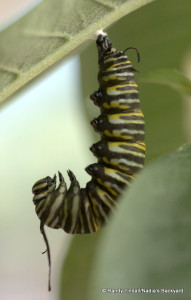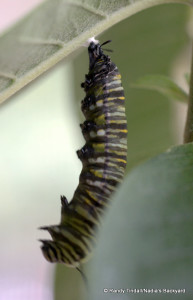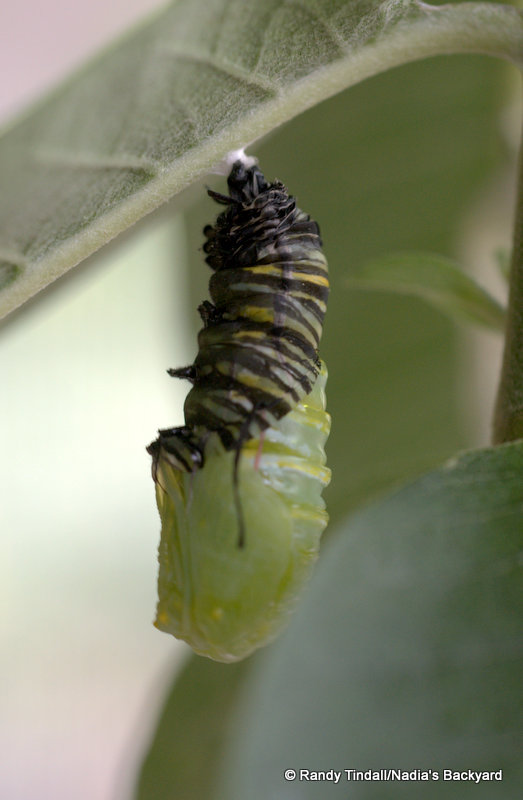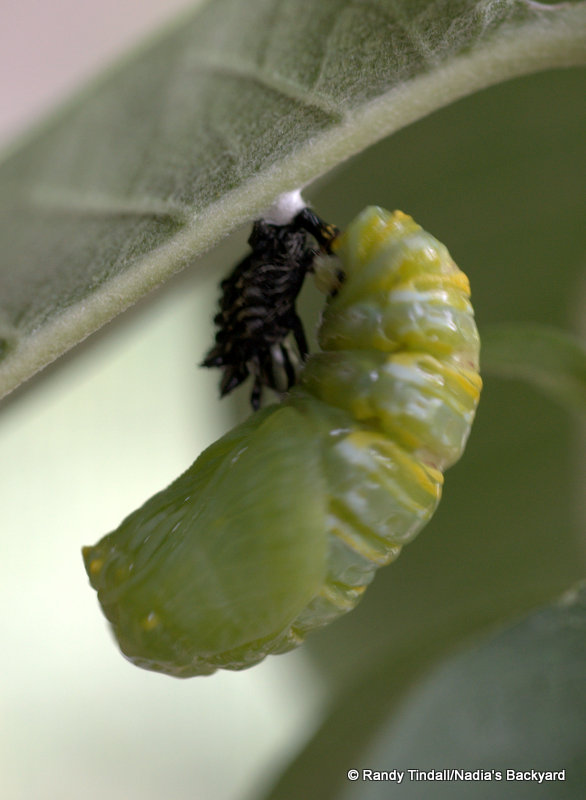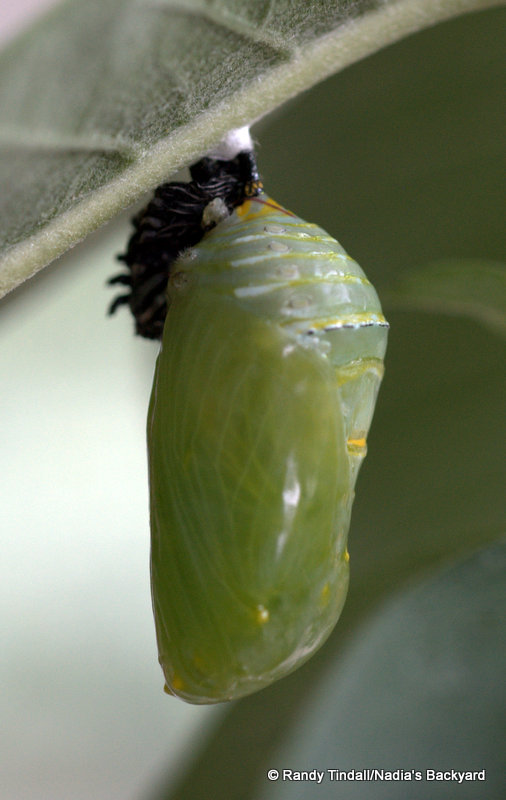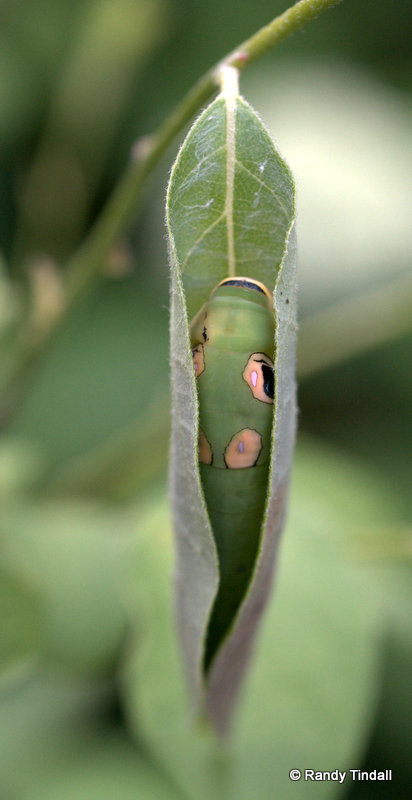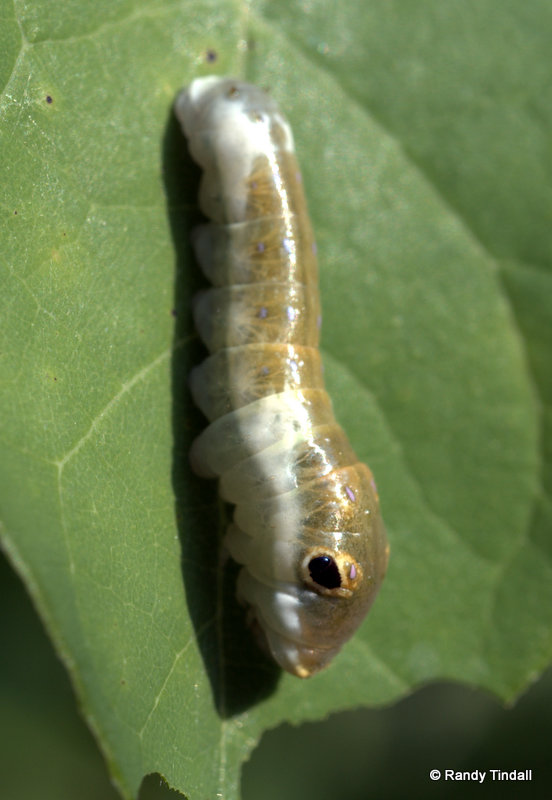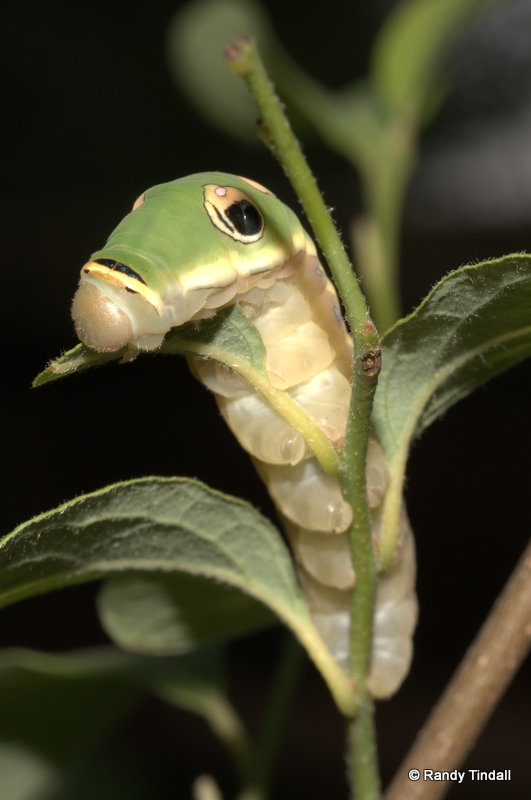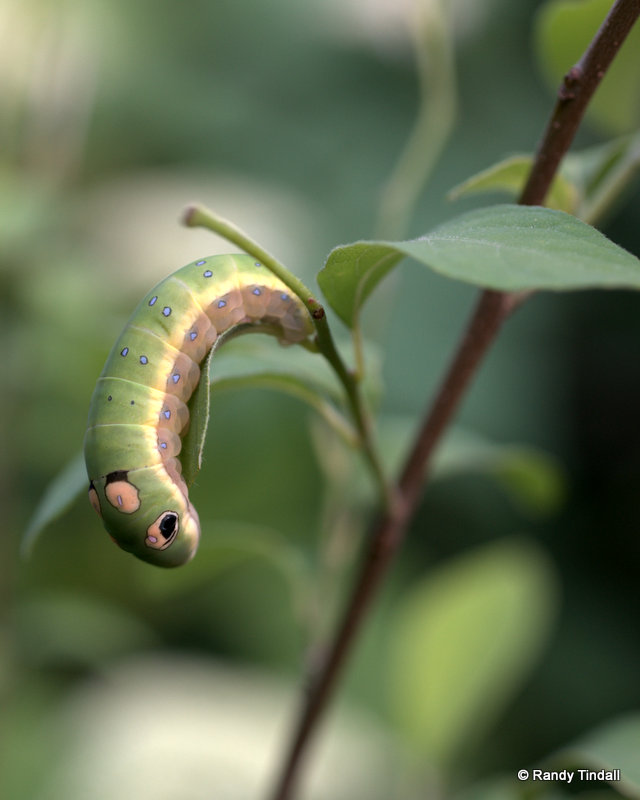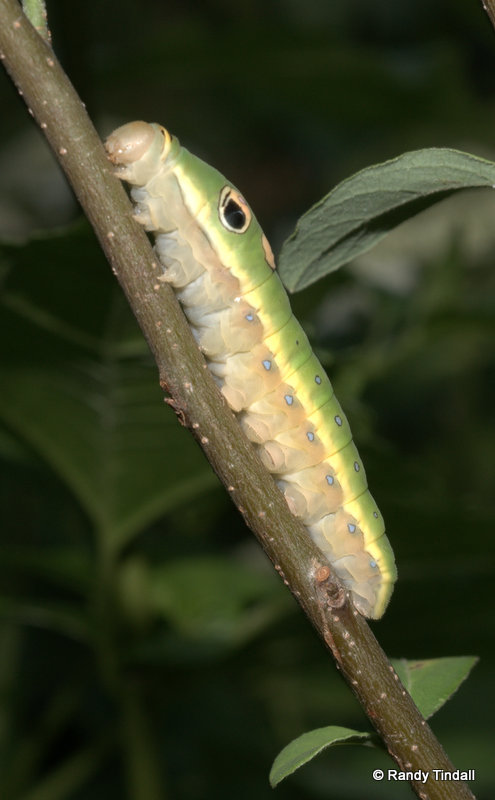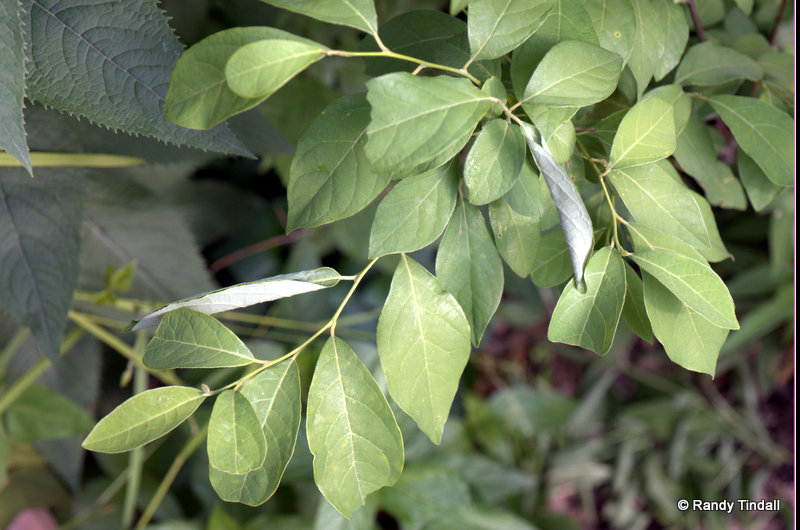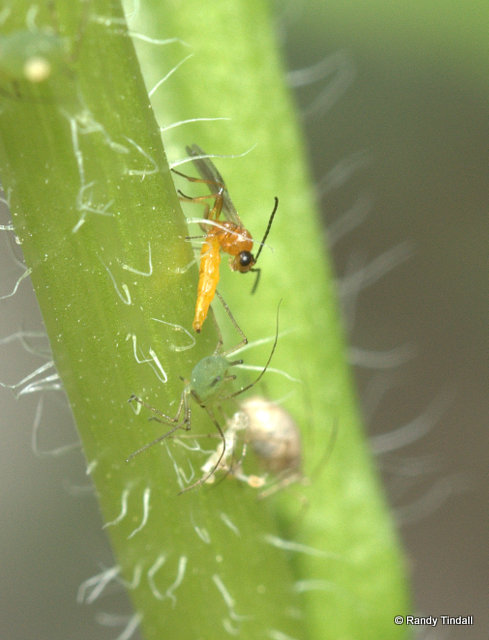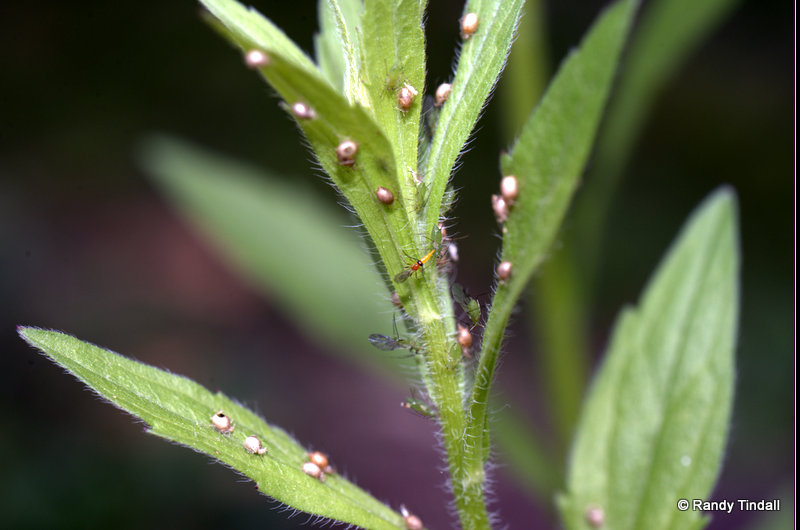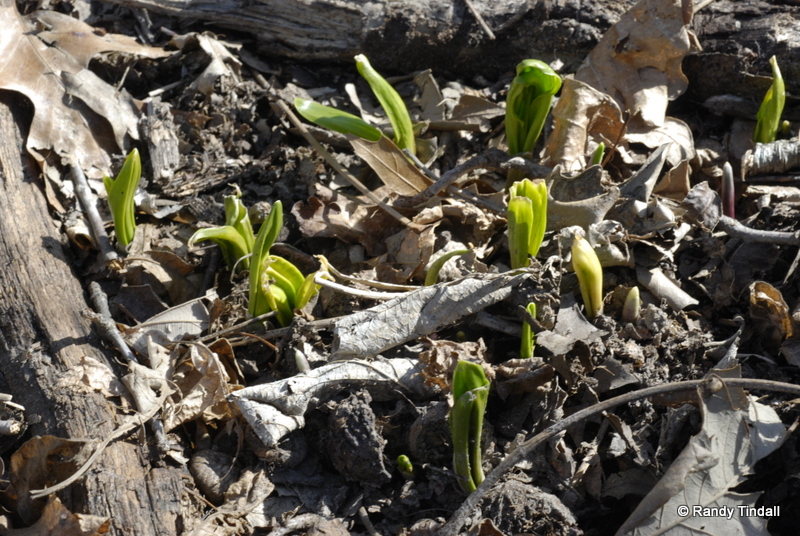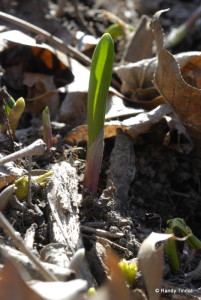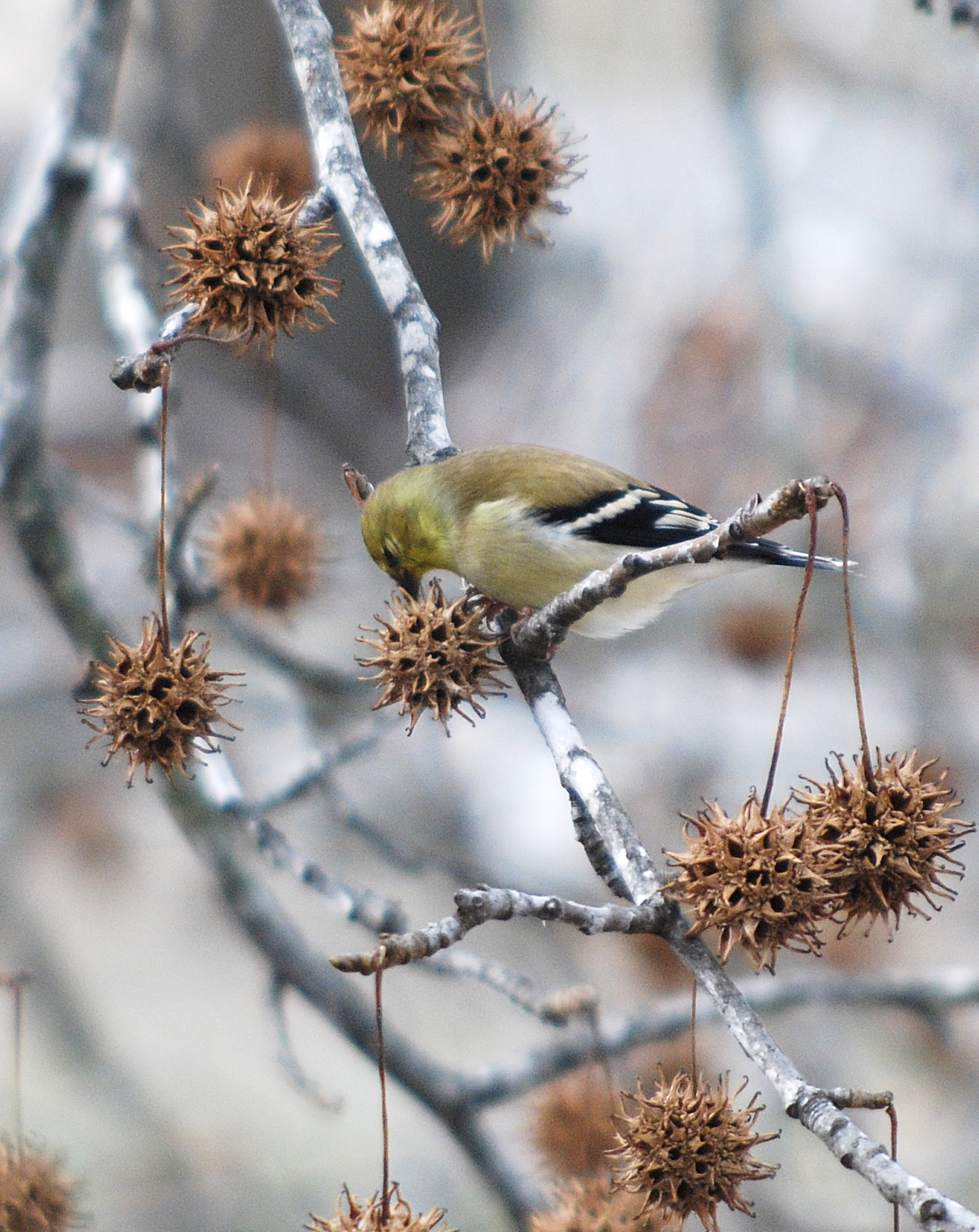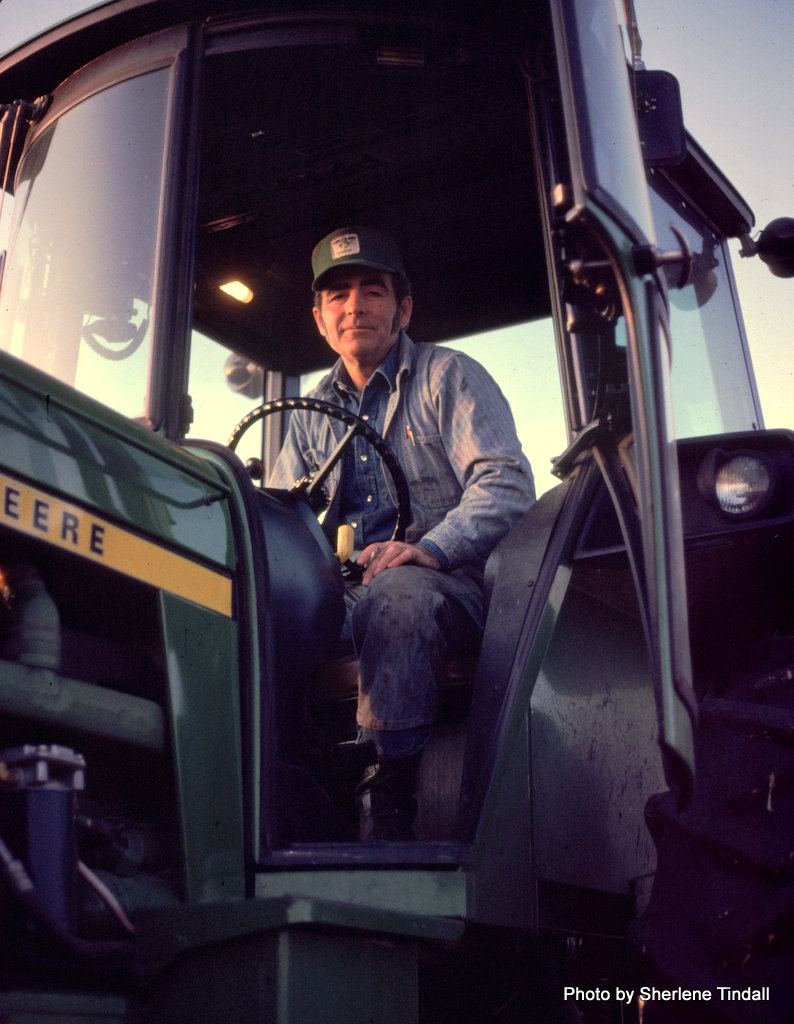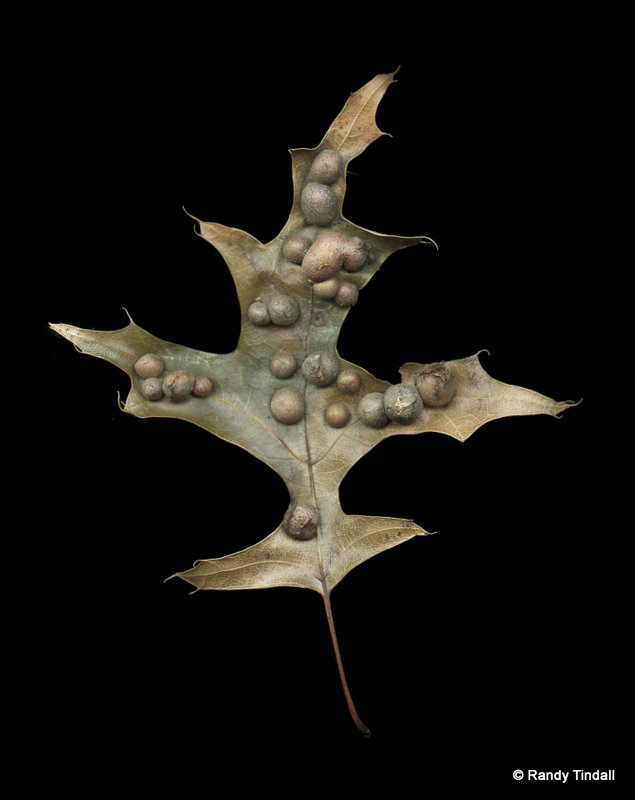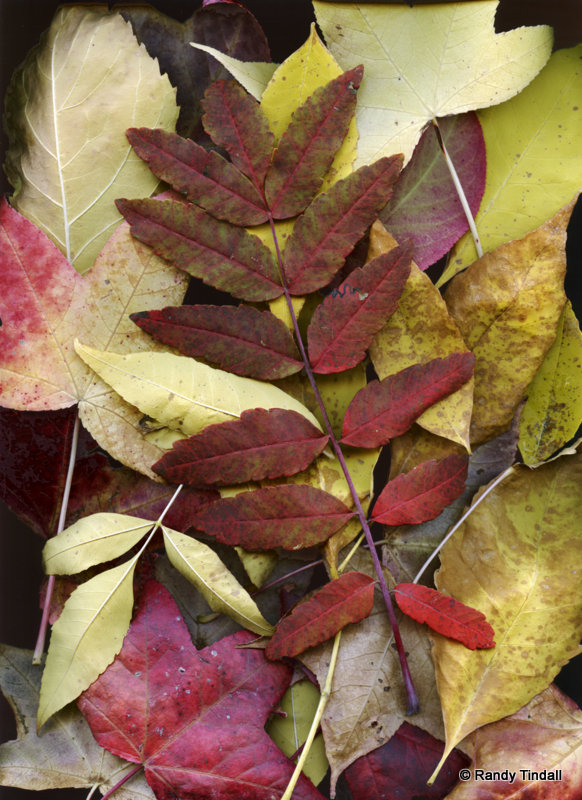There seems to be something attractive about plant stands near our front and back doors. So far, we have tried to assist in three attempts by Carolina Wrens to use them as nesting sites,
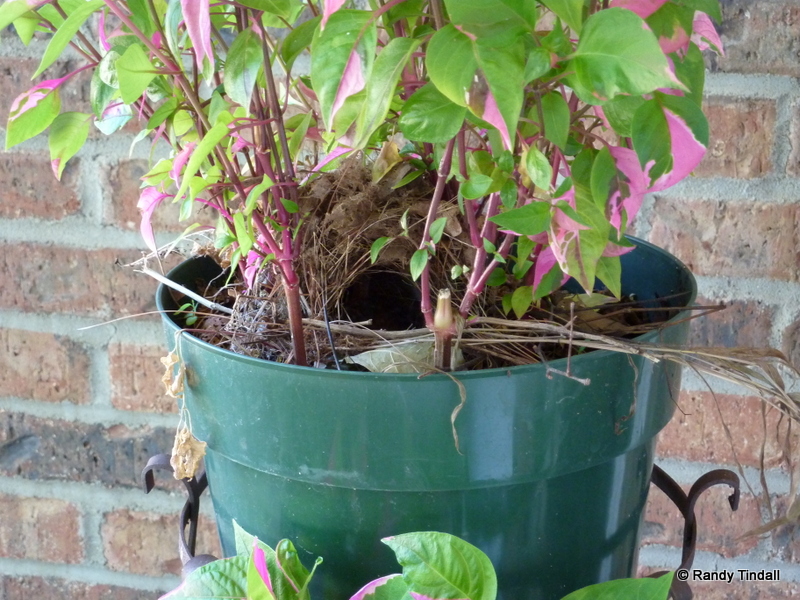
Carolina Wren nest in plant stand in our backyard.
which makes getting in and out of our house a little trickier than normal. But we did our best and managed to help one out of three nests actually succeed in fledging young wrens. Between disturbance of the nest by us and interference by cowbirds, life was tough for young feathered parents in these parts. And now it was happening again, but not with wrens.
This time our backyard and garage had become our main way in and out of the house. We were resigned to stop using our front door for a while. After all. the garage and back door could get us in and out almost as fast, and using them wouldn’t disturb the nesting cardinals in the front.
The lovestruck pair had chosen a planter in our entryway for their domicile, a scant foot or two from the door, and in no time at all had populated it with an egg. We watched, moving slowly past the window and trying not to frighten the mama bird off her egg. When she left of her own accord, we would sneak out, peer into the nest and snap a photo or two and duck back inside before anybody got too upset. Finally, we hung a sheet over the window to preserve the birds’ peace and harmony and just peeked carefully on occasion.
Soon, on one of our quick excursions to look into the nest, we found the other egg. It had an amazing resemblance to the cardinals’ egg, but was smaller and had some subtle variations in color and pattern.
Cowbird. Just like in the wrens’ nests. Damn.
The cardinals were fighting back, though, and pretty soon a second large egg showed up.
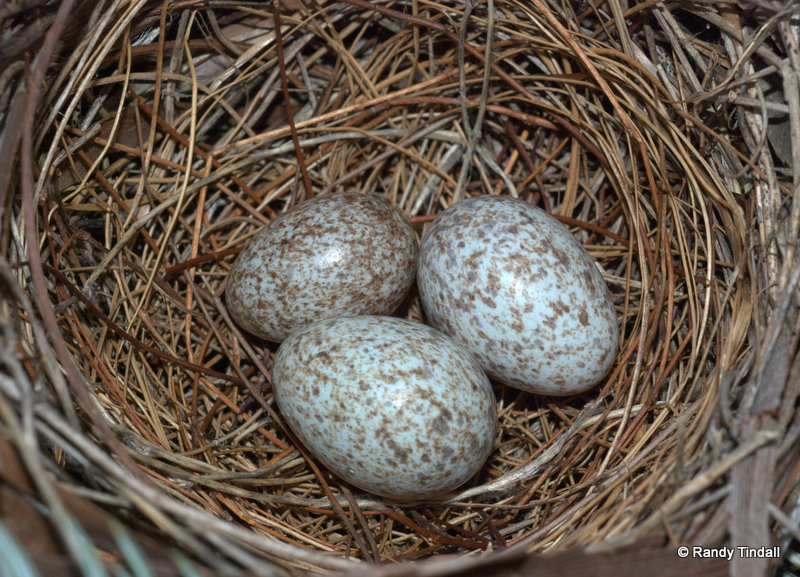
Cardinal eggs with smaller cowbird egg
A dilemma. I posted the above photo on Facebook and queried friends about how we should handle this—let things work themselves out or remove the cowbird eggs and give the cardinals a fighting chance? Most replies were pro-cardinal and anti-cowbird, but then one old friend from my college days posted, “”
So, there it was. There would be no escaping this existential decision, this examination of values and subsequent action or inaction that would have consequences either way.
I think a little background is called for here.
__________________________
The egg of interest here was that of the Brown-headed Cowbird (Molothrus ater), which is a common bird around these parts and very pretty in its blackbirdy sort of way. My favorite thing about the cowbird is its warbly, beautiful, difficult to describe call. It sounds like, well….liquid. A buddy stopped by one day and when a cowbird vocalized he turned to me and said, “Do you have water running somewhere?” It’s kind of like brook water over clean stones.
Most people’s least-favorite thing about the cowbirds is that they are obligate “brood parasites” that do not build their own nests, but use other birds’ nests to lay their eggs in. Here’s where the values come in, our natural human response to perceived unfairness. “You mean, these nasty little birds let someone else do all the work, then swoop in, cut to the front of the line and take over?” Well, yeah, kind of.
Not only that, but they often toss out the host family’s babies in the process. “The cowbird’s egg usually hatches a day or two before the host’s eggs. Rapid growth allows the cowbird chick to out compete the host’s chicks for food and space in the nest. The result is that the host’s chicks usually perish.”
And it doesn’t stop there. If the host birds try to protect their nests by removing the cowbird’s eggs, there is evidence that the cowbirds will retaliate by damaging the host nests and destroying host eggs or young, a process referred to as “mafia behavior”. One study indicated that nests that ejected cowbird eggs actually produced fewer host offspring than nests that accepted the eggs!
I mean, really? Is it so hard then to see why most people recommended getting rid of the cowbird’s eggs and saving the cardinal chicks? I mean, these are unpleasant matters. But, as my contrarian friend suggested, the cowbirds are just trying to get by doing what they were made to do, like all of us. They don’t hate the cardinals, and I doubt that the cardinals hate them. It’s business, not personal. So, why punish them, why interfere? Should our human-centered values about fairness in human transactions really apply to the world of natural selection and instinctive survival? Or are those two worlds really separate at all?
Do we have any responsibility here? Maybe. You see, cowbirds live life on the edge. Not in the sense of adrenaline-pumping high adventure, but in the sense that they historically prefer the boundaries between forest and clearings, avoiding the forest interiors where nesting birds were pretty much safe from them. They were also fond of the mid-American prairies and were thought to have followed the vast bison herds in their magnificent meanderings.
But then along came you-know-who, altering habitats, cutting down forests, plowing up the prairies, and generally doing a lot of cowbird-friendly things. Suddenly there was a lot more “edge” than there used to be, a lot more short-grass and row-crop habitat that favored these opportunistic birds. And they have thrived. They have spread and increased and gone forth and multiplied. Here in urban-world it’s basically all edge and cowbirds love it. Who’s responsible for that? Natural selection?
_____________________________________
So here it was, right outside our front door. A battle between two species with different reproductive strategies, one of them aided by me and mine, historically speaking—the other just trying to carry on. And now a second cowbird egg appeared making it two against two, but hardly even.
We made an executive decision, Nadia and I, maybe thinking of the beauty of cardinals on snow-covered boughs or maybe thinking that the builders deserved the rewards, instead of the usurpers. At any rate, due to whatever combination of values driving us, we removed the cowbird eggs.
And soon:
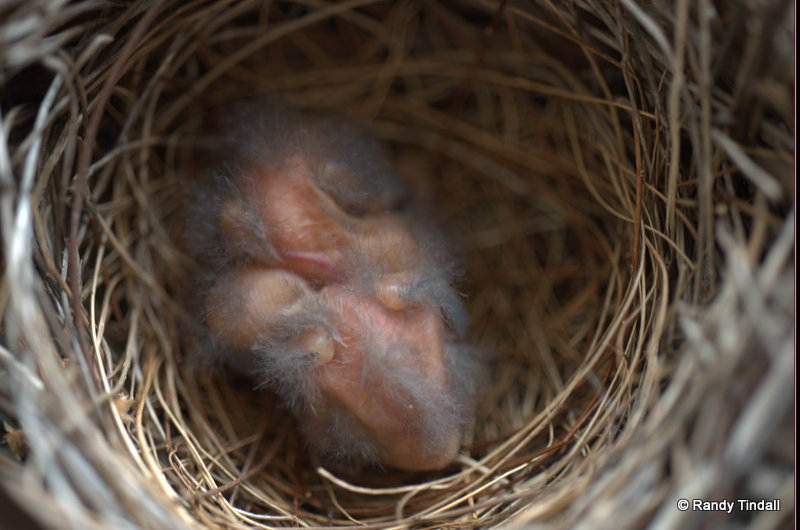
Northern Cardinal Chicks
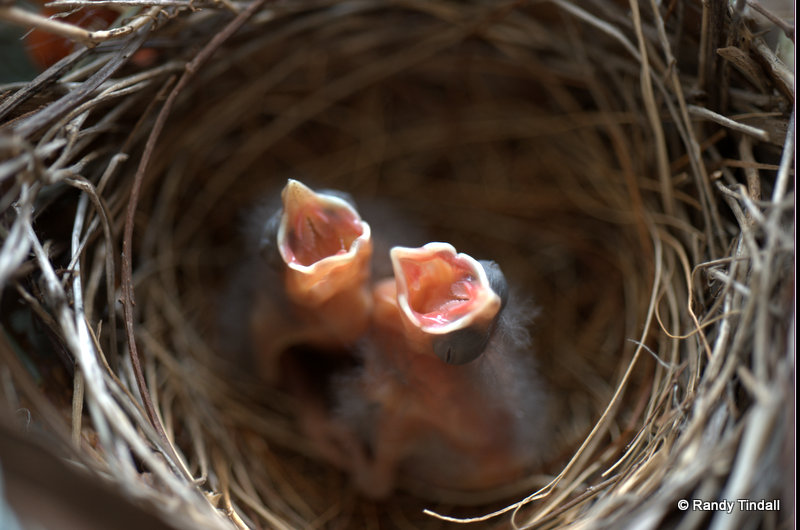
—and hungry ones at that!
We continued to monitor the nest several times a day, and I wish I could end this on a cheerful note, but life is seldom so simple, I suppose.
A few days later we checked when the mother was off the nest and found only one chick. I went out and searched the immediate area, hoping that the nestling had simply fallen out, but there was nothing. Later that day, the mother was back, caring for the second baby. A day or two later, that chick also disappeared. Again, I went out and searched the entryway and the surrounding yard. The parents were agitated and moving around an adjacent sweet-gum tree, uttering little “pips” of alarm. They actually got quite close to me as I searched. Again, nothing. The nest was then abandoned and still sits in the plant stand outside our window.
What happened? Squirrels will take nestlings for food, but we had never seen one near our front door. Crows will take baby birds, too, but we have never seen them in our yard at all. Cats? Maybe. I have even witnessed a bluejay chasing down a young bird, killing it and eating part of it.
Or could it have been the Cowbird Mafia? We will never know. Nobody’s talking….
Postscript: The day after the second chick disappeared, I was sitting and reading in our living room, which is slightly below ground level. I heard a scrabbling sound and then a tapping against the glass of one of our windows and I looked up to see the head of a female cardinal peering in and seeming to look straight at me. She disappeared and I went back to my book. Minutes later, there was another tapping on the glass and the cardinal appeared at a different window, again seeming to stare directly at me. She tapped her beak against the glass, stared, tapped and stared again.
She watched for a moment, then vanished.
I didn’t see her again.
 Nadia’s Backyard
Nadia’s Backyard
